This Brand-new Oaxaca Hotel Is a Working Mezcal Distillery With Six Perfectly Designed Suites
Sitting at the "grand table" at Casa Silencio — 17 tons of hand-cut basalt that extends from the hotel's restaurant into the plant-lined courtyard — I chatted with Torrence Swain, who oversees east coast operations for Mezcal El Silencio. We had our laptops in front of us for a work session fueled both by our freshly made carajillos (basically, a Latin American espresso martini) and the million-dollar view. Agave-strewn plains stretched out ahead of us, and rays of sun broke through the clouds in a truly Godlike display, drenching a nearby mountain in light. I asked Swain (who goes by "Brother Agave" on Instagram) about the work that went into building the Casa. He pointed to the wall behind me, and said, "See that? I helped make it."
This is a hotel completely rooted in mezcal — so much so that everyone at Mezcal El Silencio, the largest purveyor of mezcal in the U.S. and the brand behind this property, was enlisted to help out. This hotel is, in many ways, the first of its kind. While mezcal and hospitality are a given on any trip to Mexico, an integrated approach to tasting tourism hasn't quite taken hold. Tasting rooms and distillery tours abound in the desert outside Oaxaca City, but most mezcal tourists retreat back to town at the end of the day.
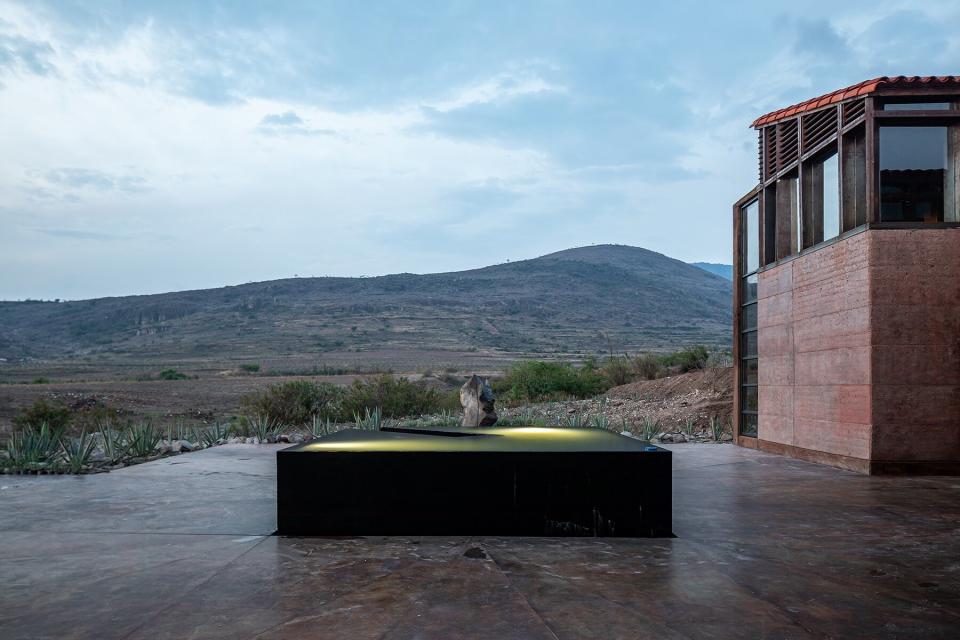
Onnis Luque/Courtesy of Casa Silencio
That is, until El Silencio founders Fausto Zapata and Vicente Cisneros unveiled a six-room hotel on their distillery grounds in Xaaga, 30 miles outside the capital. The property officially opened on September 15, but I was lucky enough to preview it in early August and see their vision realized. The pair, both originally from Mexico City, grew up visiting this region on weekend trips that were all about spontaneity, great food, and even better drink. In Casa Silencio, they hope to reflect their own experiences with Oaxacan hospitality.
"There are places in the world that may be as beautiful as Oaxaca, but none more so," Zapata told me. "Going out to eat and to drink and be in the streets and feel the energy, it was always something I would look forward to."
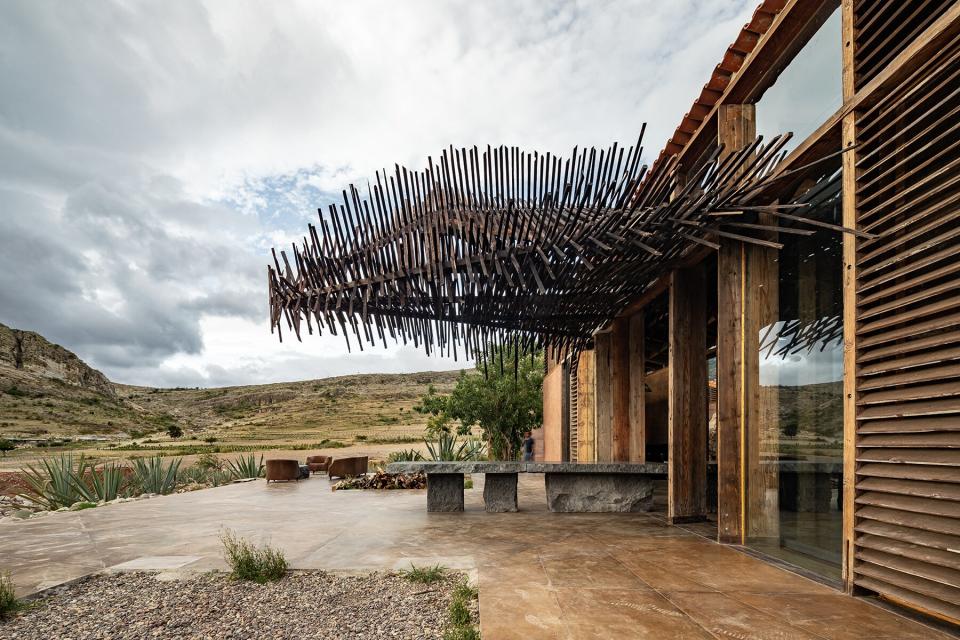
Onnis Luque/Courtesy of Casa Silencio
In breathing life into Casa Silencio, Zapata and Cisneros sought to emulate boozy destinations that put guests in the heart of production — the vineyard hotels of Napa, the distillery lodges in the barley-lined hills of the Scottish Highlands. Their research paid off. The Casa Silencio experience is full-blown immersion: guests learn to speak the language of mezcal fluently here. Before it became a hotel, this was one of three El Silencio distillery facilities in Oaxaca, and it is still very much producing mezcal. I got in on production myself, with professional help of course — chopping agaves plucked from the Casa Silencio grounds and smoking the smashed piñas, the inner hearts of the spiky plants.
Distillery features are integrated into the design of this place. All mezcal producers use an enormous tahona, or grinding wheel, to draw out the agave juice for fermentation; Casa Silencio has made theirs a focal point. The enormous solar-powered wheel can be found calmly crushing roasted agave in the common area, where we practiced yoga one morning.
Zapata and Cisneros tapped Mexican architect Alejandro D'Acosta, known for his work in the wine-tasting enclave of Valle de Guadalupe, to design the property with sustainability in mind: the walls are made using a rammed-earth method called tapial, using soil taken from the ground on which Casa Silencio sits, and the ceilings are constructed from recycled Oaxacan wood. The property is powered predominantly by solar energy.
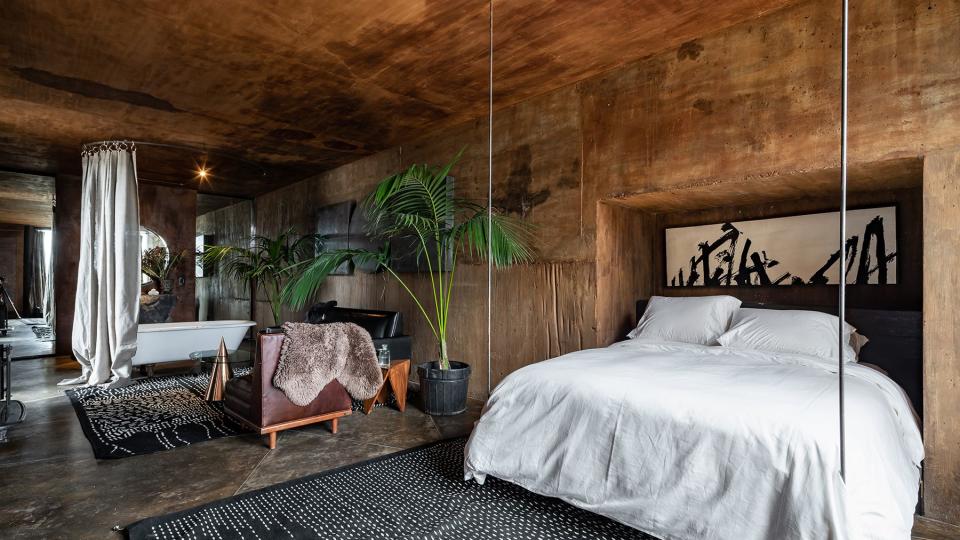
Onnis Luque/Courtesy of Casa Silencio
Oaxaca is, of course, a mecca for the arts, and reminders of that are everywhere. The six suites are outfitted with abstract copper-and-glass light fixtures and handmade rugs — plus a bottle of El Silencio and a serving of mezcal-infused gummy worms waiting for new guests. My room, opened with a key affixed to a black talisman necklace that I wore as jewelry throughout my stay, was split across two levels, with a lofted boudoir, a sitting room filled with sheepskins and works by local artists, and a bathroom with walls made of empty El Silencio bottles. Next to the building is a square, water-filled sculpture that doubles as a swimming pool.
Oaxaca is also well-known for its food and drink; the restaurant and bar scene in the capital is a major reason T+L readers voted it the no. 1 city in the world in last year's World's Best Awards. Zapata told me the state has become not only a "cradle of mezcal, [but] a culinary capital of Mexico."
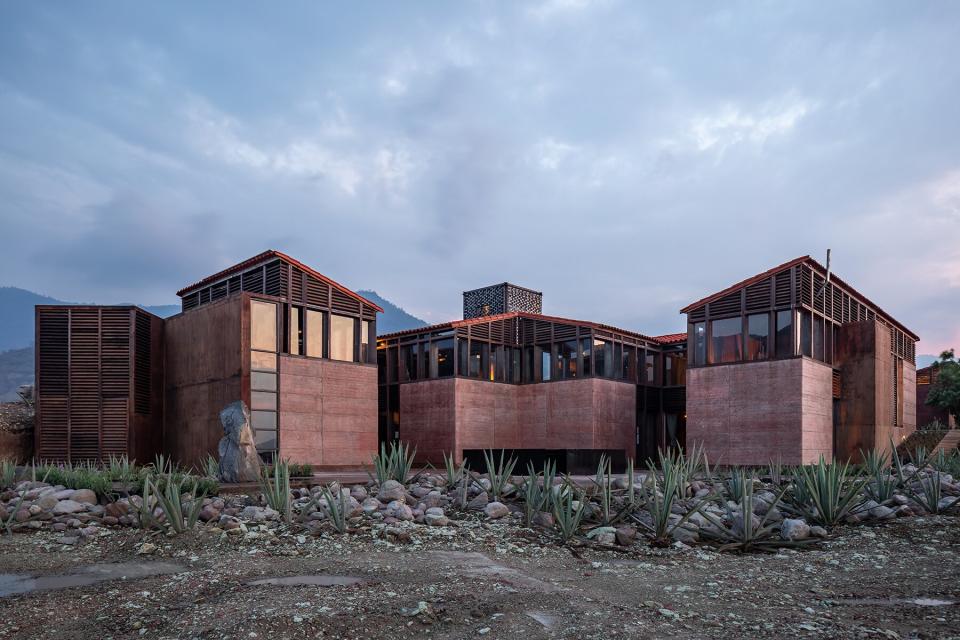
Onnis Luque/Courtesy of Casa Silencio
Casa Silencio doesn't just reaffirm Oaxaca's culinary clout — it raises the bar. As Carlos Ochoa, El Silencio's chief operating officer, explained, the goal is to keep Oaxacan talent in Oaxaca. The best chefs often head to Los Angeles or other U.S. cities, but Casa Silencio recruits local chefs, mixologists, and hospitality staff, and helps them grow right here in Xaaga.
The moment I stepped on property, I was instantly enveloped by the scent of smoked agave and slow-grilled ribs. Head chef Daniel Robles does Oaxacan fare with a Tennessee influence: perfectly charred steak tacos, tasting menus that start with mezcal-infused watermelon, and at one point, an end-of-the-night hot dog I was in no position to turn down. Robles did a 10-year stint smoking meat in Nashville, and also helms the BBQ Pit Oaxaca, in the city; his mastery of Southern flavors and barbecue technique is evident.
Another example of the local talent on display at Casa Silencio: Top Chef Mexico winner Rodolfo Castellanos. As an homage to the area's Zapotec heritage, Castellanos designed a Indigenious-inspired food flight to accompany tastings of never-before-released El Silencio vintages, using flavors like cacao; the traditional Mayan condiment recado negro; and queso oaxaca paired with guava paste. The bites are served on a hunk of silver alongside rare El Silencio varieties you can't find outside the hotel: small-batch tobalas and javelins, which make for smooth, easy sipping. Sampling them with Castellanos' pairings unlocked new flavors in every mezcal I tried.
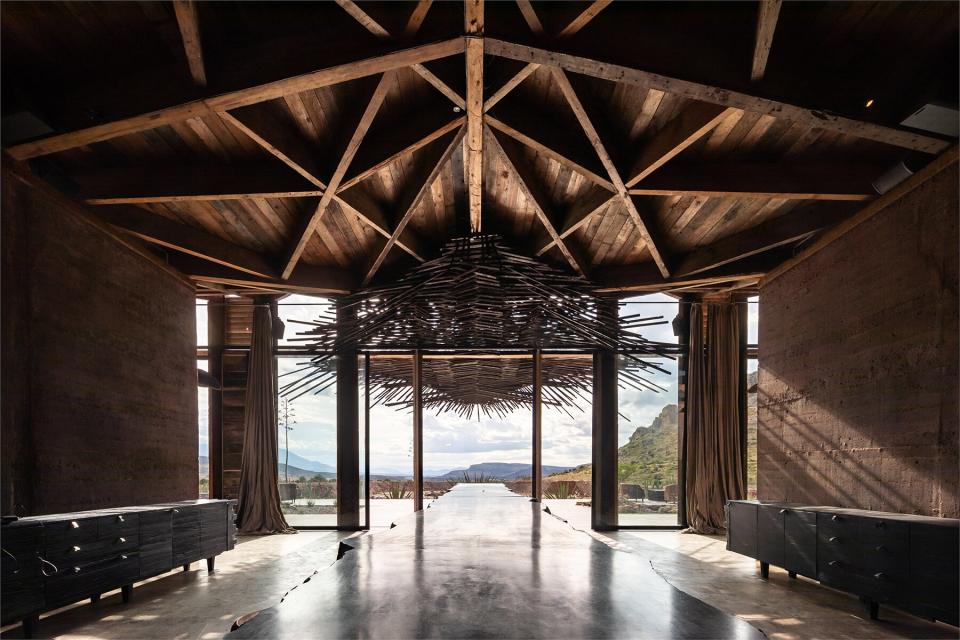
Onnis Luque/Courtesy of Casa Silencio
As these afternoon tastings linger into the evening, the atmosphere at Casa Silencio turns positively sultry — and it's not just the free-flowing mezcal. The rare iterations of El Silencio mezcal — including their coveted Black Magic, a charcoal-black spirit with an undisclosed recipe — keep coming, now enjoyed with friends rather than in reverent silence. The lights nestled in the agave plants outside begin to flicker on. The courtyard fire pits start to crackle, and candles cast a narcotizing glow along the grand table. A nightcap beckons, whether in the cozy library or the Rhino Room: a secret after-hours hangout furnished with tufted leather couches, vintage trunks packed with bottles of mezcal, and a silver rhinoceros sculpture mounted on the wall. Walking back to my suite, even the night sky is getting into the mood, filled with stars and brightening periodically with lightning from a far-off thunderstorm.
It's enough to remind me of a quote that stuck out when I first interviewed Zapata: "Oaxaca is a little bit of mischief, a little bit of improvisation," he said. "We want to give people some of that magic."

